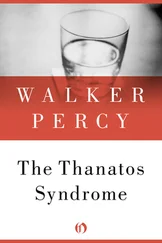Is the lady novelist the only tertium quid?
But first, what does the lady novelist see if we put her down, not outside a barracks window, but on the other side of a viewing mirror through which she can see therapist and patient who were talking about the rat behind the arras and related oedipal feelings? She notices first off, let us say, that the patient does get excited. But far from its being the case that he is upset and is “resisting” the disclosure of unpleasant unconscious contents, she has the distinct impression that the patient is delighted. Moreover, being a good novelist and well attuned to the intellectual fashions of the day, she has the distinct impression that the patient’s pleasure has something to do with the fact that he has produced a kind of behavior which measures up to, or fits in with, the very theory to which he and his analyst subscribe. Perhaps it also occurs to her that the patient is in a sorry fix indeed if his chief claim to happiness is that occasion when he manages to be sick in the right way.
Suppose that the lady novelist is right. Is she then the tertium quid? Is her way the only way to get at what is going on? And if it is, has not all the fun gone out of the game of behavioral science and the scientific method itself lost its splendid rigor?
Have we not in fact come back to George Miller’s original misgiving, which haunts all behavioral scientists when the subject of words and meanings is raised? Must we not then let it go at that, surrender the field to Tolstoy’s lady novelist, or to Husserl, which is to say the same thing?
Perhaps. But Charles Peirce did propose a radical theory of signs which undertook to give an account of those transactions in which symbols are used to name things and to assert sentences about things. In view of the heroic and generally unavailing attempts during the past fifty years to give such an account through one or another dyadic theory, it might be worthwhile for once to approach triadic behavior with a genuine triadic theory.
Such a theory might bestow order and system upon the phenomenologizing which to the behavioral scientist must seem closer to novel writing than to a science of behavior.
For example, the oedipal patient’s agitation may be given some such preliminary reading as follows:
The patient’s agitation is not dyadic misery — resistance to the disclosure of unacceptable unconscious contents — but triadic delight. This delight, moreover, is quite as fundamental a trait of triadic behavior as organismic “need-satisfaction” is in dyadic behavior. It is a naming delight which derives from the patient’s discovery that his own behavior, which until now he had taken to be the unformulable, literally unspeakable, vagary of one’s self, has turned out not merely to be formulable, that is to say, namable by a theory to which both patient and therapist subscribe, but to be namable with a name which is above all names: oedipal!
As such, the patient’s delight has good and bad, authentic and inauthentic components, which must be traced out and identified within an adequate triadic theory. Thus, the patient’s sentence It’s oedipal! must be investigated for Platonic and even magical components in its mode of coupling as well as for its valid intersubjective celebration of an important discovery. Perhaps the patient’s sentence can be paraphrased in some such terms as: “At last I have succeeded! At last I have produced a proper, even a classical, piece of psychopathology!”
Accordingly, the patient’s behavior with its strong normative components must be evaluated on a normative scale which is in turn an integral part of the triadic theory in question. It is impossible in other words to avoid the subject of the patient’s impoverishment and loss of sovereignty.
In his astounding achievement of applying the scientific method to the irrational contents of the unconscious, Freud did not have time to consider what goes on between doctor and patient, nor how a technique itself can loom large as part of the intellectual furniture of a later age, much less how it could come to pass that one can fall prey to the very technique one seeks help from.
But that does not excuse us from investigating these matters.
* Actually the dyads should be segmented in some such order as O =f(S), in which O = the organic variables and S = the stimulus variables; Ib = f(Ia), in which I = the intervening neurophysiological variables within the organism; and R = f(O), in which R = response variables, or measurement of behavior properties.
* “Ouch” is a learned response. A German wouldn’t say “Ouch” but perhaps “Aie,” a Yiddish speaker “Oy.”
* Or the NP-VP division of transformational linguists. Or Strawson’s division of a sentence into what you are talking about and what you are saying about it.
* Nor are language couplings the only kind of couplings which occur. There are other kinds of symbols and other kinds of sentences, e.g., the coupling of a map with the territory, the coupling of van Gogh’s painting The Cypresses with what is symbolized (which is not merely the cypresses but forms of feeling as well). But here we are concerned primarily with language sentences.
† In Chapter 9 I describe symbolusing behavior as characterized by a tetradic structure. Thus, if one were to observe an utterance of a symbol — or, as I would say here, of a sentence — one would notice that there is not only an utterer and a coupling of sentence elements, but also a listener or receiver of the sentence. “The second person is required as an element not merely in the genetic event of learning language but as the indispensable and enduring condition of all symbolic behavior. The very act of symbolic formulation, whether it be language, logic, art, or even thinking, is of its very nature a formulation for a someone else. Even Robinson Crusoe, writing in his journal after twenty years on the island, is nevertheless performing a through-and-through social and intersubjective act.”
Today, ten years later, I would broaden the notion of coupling “symbol” and “object” to the utterance of sentences in general, whether symbol and object, naming sentences, or traditional declarative sentences with subject and predicate.
This “tetradic behavior,” involving an utterer, a receiver, symbol and object, is contrasted with the “semiotic triangle” of Ogden and Richards, involving a sign which affects an interpreter which in turn responds with behavior relevant to an object or referent.
I find it convenient here, however, to observe Peirce’s distinction between dyadic relations and triadic relations. It will be seen that no substantial change has been made. What matters is the difference in “valence” between the semiotic relations encountered in symbol use and those in signal use, whether the difference is between triads and tetrads or dyads and triads.
Thus, the “semiotic triangle of Ogden and Richards with its “causal” relations between sign and interpreter and between interpreter and referent is clearly, in Peirce’s scheme of things, a pair of dyads.
The tetrad I proposed can, if one wishes to deal with atomic rather than molecular events, be split apart along its interface between utterer and receiver of a sentence, yielding a coupling of sentence elements by utterer and a subsequent coupling by receiver. The tetradic model, I see now, is appropriate only in successful communication, i.e., those transactions in which the same elements are coupled by both utterer and receiver and in the same mode of coupling. Unfortunately this is not always the case.
In short, in Chapter 9 I deal with the “molecular” structure of the communication process, whereas I am here dealing with the “atomic” structure.
Читать дальше












